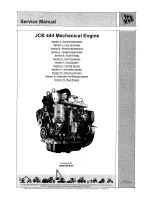
28
Testing and verifying the failsafe, verification can be performed either by
starting the turbine or using the HDT display
.
Verification by Starting the Turbine
1. Start the engine. Set the power to any setting above idle.
2. Turn off the transmitter but leave the receiver on and engine running.
Verify that the engine power goes to idle after 0.5s and shutdown after 2 s. If signal
from TX is re-gained during these 2s, power will return to normal.
Note:
this is only valid when using non 2.4 GHz equipment, with 2.4 GHz equipment
the Turbine will shut down immediately with the powering down of the transmitter, the
reboot time of the power up sequence is longer than two seconds therefore signal
cannot be regained in the time allotted.
6 Starting the engine
6.2.1 Preparing the turbine for running
Always test the turbine on a test bench before installing it into the plane, this will confirm that
all systems work as they should, and you will be able to learn its operation and the
emergency procedures. A suitable platform/table/workbench is required to clamp the test
stand onto. Make sure this can be easily transported outside and weighs enough to ensure it
cannot be blown over by the thrust of the engine.
Select a clear area for running – keep clear of areas with loose leaves, sand or other debris
that could be picked up or drawn towards the intake. Ensure the fuel tank is position well
clear of the exhaust area and is secured.
6.2.2 Important notes for kerostart turbines
The kerostart system used on all Jet Central turbines is reliable and well tested system that
produces very smooth and trouble free starts. However, extra care and attention must be paid
when starting a kerostart turbine.
The main difference between gas and kerosene starting is that in the case of a failed ignition,
with gas starting the gas dissipates quickly in the air and isn’t kept inside the engine
Kerosene is liquid and, if unburned, will pool inside the engine and stay there. The engine can
hold a large quantity of kerosene inside. This kerosene will be ignited on next successful start
up and will be pushed to the exhaust as soon as the airflow inside the engine is sufficient,
and will be ignited in the exhaust, causing a hot start (in extreme cases a big fireball) that will
not hurt the turbine, but can destroy the model.














































